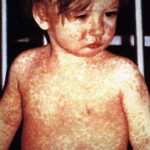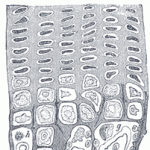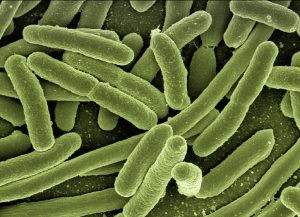The Wallenda Model of Homeostasis
TAPP Radio Episode 46
Quick Take
00:44 | Measles & Immune Amnesia
09:16| Sponsored by HAPS
09:44 | Bone Growth Update
13:55 | Sponsored by AAA
14:27 | Featured: The Wallenda Model of Homeostasis
40:43 | Sponsored by HAPI Online Graduate Program
41:32 | Hearing from YOU
Listen Now!
Get the full experience—listen to this episode’s Preview first (with additional content).
After nourishment, shelter, and companionship, stories are the thing we need most in the world. (Philip Pullman)
1 | Measles and Immune Amnesia
Measles (MV) is very contagious and can be deadly, even though some cases are mild to moderate. However, it can also “erase” some or all of our immune memory!
- Measles and Immune Amnesia (article from American Society for Microbiology) my-ap.us/2F0Chew
- Watch: The tricks that make measles so infectious (video you can use in your class) my-ap.us/2EWugar
- Notes
- In this segment, the necessary step of memory cells producing effector cells (that engage pathogens) in subsequent exposures to the “remembered” pathogen is glossed over for simplicity of discussion.
- Presumably, the “live” attenuated MV used in vaccination triggers formation of memory cells against MV without causing the full-blown infection that impairs immune memory of other pathogens.
2 | Sponsored by HAPS
0.5 minutes
 The Human Anatomy & Physiology Society (HAPS) is a sponsor of this podcast. You can help appreciate their support by clicking the link below and checking out the many resources and benefits found there. AND mention your appreciation to the HAPS leadership while you are at the conference—or anytime that you communicate with them.
The Human Anatomy & Physiology Society (HAPS) is a sponsor of this podcast. You can help appreciate their support by clicking the link below and checking out the many resources and benefits found there. AND mention your appreciation to the HAPS leadership while you are at the conference—or anytime that you communicate with them.
3 | Bone Growth Update
4 minutes
How we understand growth of a long bone at the epiphyseal plate may be changing a bit. Check out the audio and the links below to find out more.
- New mechanism of bone growth discovered (summary article) my-ap.us/2EYEdEc
- A radical switch in clonality reveals a stem cell niche in the epiphyseal growth plate. (journal article in Nature) my-ap.us/2F2cwKy
4 | Sponsored by AAA
0.5 minute
The searchable transcript for this episode, as well as the captioned audiogram of this episode, are sponsored by The American Association of Anatomists (AAA) at anatomy.org. Their big meeting is in April at the Experimental Biology (EB) meeting in Orlando FL. Check it out!
5 | The Wallenda Model of Homeostasis
26 minutes
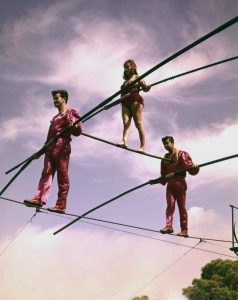
-
- The Wallendas are a family of highwire artists famous for very high/long “sky walks” and human pyramids on the wire
- Karl Wallenda, the most famous of the clan, died from a fall off the wire during a sky walk
- The famous 7-person pyramid was also marred by a tragic fall
- NOTE: The balance pole is normally up to about 30 pounds or so. The 80-pound figure given in this episode would be unusually heavy.
- Elements of The Wallenda Model
- Variable: position of body
- Set point: directly over the wire
- Sensors: nerve receptors (eyes, inner ears, muscle stretch receptors, etc.)
- Integrator: brain
- Effectors: skeletal muscles
- Where to send students:
- lionden.com/homeostasis.htm
- A summary of all three models Kevin uses to teach homeostasis
- Includes photos and links to videos
- Survival Guide for Anatomy & Physiology
- lionden.com/tips-survival-guide.htm
- Includes a short, illustrated summary of The Wallenda Model of Homeostasis
- lionden.com/homeostasis.htm
- The Wallendas are a family of highwire artists famous for very high/long “sky walks” and human pyramids on the wire
6 | Sponsored by HAPI Online Graduate Program
0.5 minute
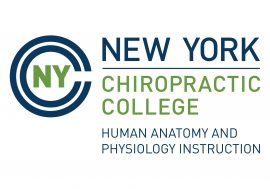 The Master of Science in Human Anatomy & Physiology Instruction—the MS-HAPI—is graduate program for A&P teachers. A combination of science courses (enough to qualify you to teach at the college level) and courses in instructional practice, this program helps you power up your teaching. Kevin Patton is a faculty member in this program. Check it out!
The Master of Science in Human Anatomy & Physiology Instruction—the MS-HAPI—is graduate program for A&P teachers. A combination of science courses (enough to qualify you to teach at the college level) and courses in instructional practice, this program helps you power up your teaching. Kevin Patton is a faculty member in this program. Check it out!
Need help accessing resources locked behind a paywall?
Check out this advice from Episode 32 to get what you need!
(If no link or player are visible, go to https://youtu.be/JU_l76JGwVw?t=440)
This podcast is sponsored by the
Human Anatomy & Physiology Society

This podcast is sponsored by the
Master of Science in
Human Anatomy & Physiology Instruction
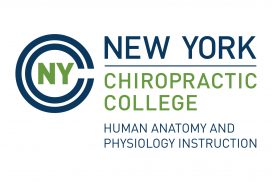
Stay Connected
The easiest way to keep up with new episodes is with the free mobile app:


Or you can listen in your favorite podcast or radio app.
Click here to be notified by blog post when new episodes become available (make sure The A&P Professor option is checked).
Transcript
To read a complete transcript of this episode,
click here.
The searchable transcript for this episode is sponsored by
The American Association of Anatomists.

Call in
Record your question or share an idea and I may use it in a future podcast!
Toll-free:
1·833·LION·DEN
(1·833·546·6336)
Local:
1·636·486·4185
Email:
podcast@theAPprofessor.org
Share

Preview of Episode 47
Host Kevin Patton previews the content of the upcoming full episode, which focuses on the human microbiome, teaching in the age of artificial intelligence, and a special summer series of episodes. There’s more… some word dissections and Mindi Fried’s recommendation for The A&P Professor Book Club.
Topics
0.5 minute
- Teaching A&P in the age of artificial intelligence
- The human microbial system (human microbiome)
- Special episodes this summer!
Word Dissections
6.5 minutes
- Artificial intelligence (AI)
- Microbe
- Microbiome
Book Club
3.5 minutes
- Do Zombies Dream of Undead Sheep?: A Neuroscientific View of the Zombie Brain
- by Timothy Verstynen & Bradley Voytek
- amzn.to/2FAkniR
- Recommended by Mindi Fried
- Special opportunity
- Contribute YOUR book recommendation for A&P teachers!
- First five submitted and used will be in a drawing for a Kindle Fire HD 10 tablet
- Any contribution used will receive a $25 gift certificate
- The best contribution is one that you have recorded in your own voice (or in a voicemail at 1-833-LION-DEN)
- Check out The A&P Professor Book Club
Last updated: December 23, 2020 at 9:48 am
